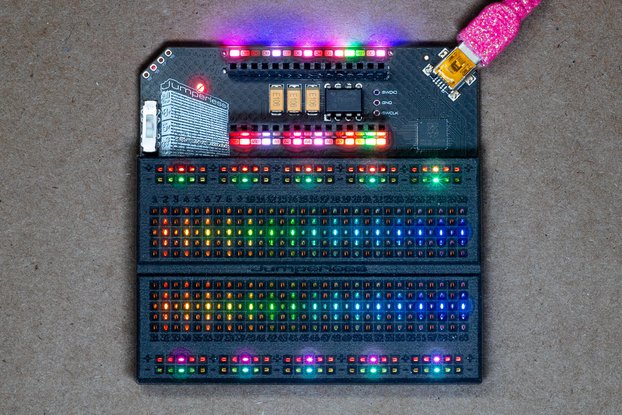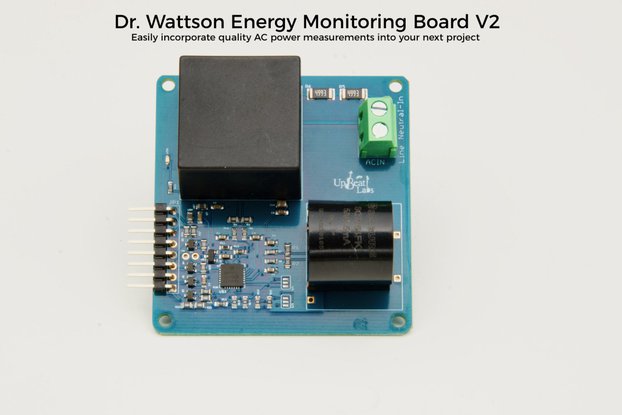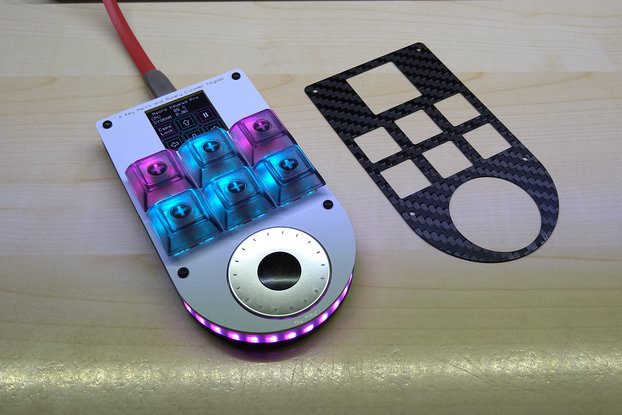It's a microcontroller powered panel meter. It works both as volts/amps meter and as a fully functional Arduino type board.
Designed by Sigma Zeta Electronics in Greece
Buy with confidence.
Our Tindie Guarantee protects your purchase from fraud. Learn More
What is it? It’s a user programmable Panel meter which makes current (high side sensor)/voltage measurements(12bit ADC - 2LSB max INL) accurately and serves as microcontroller solution also! It is h…
Read More…It’s a user programmable Panel meter which makes current (high side sensor)/voltage measurements(12bit ADC - 2LSB max INL) accurately and serves as microcontroller solution also! It is housed in an enclosure box (already assembled, female (white) main header included) ready to be mounted on a front panel. It has two 4 digit red 7 segment displays, one large (0.39”) and a smaller one (0.28”). There is a 3mm red led inside it and 2 tactile buttons are mounted on the front so that they are accessible for the user to push.
I am an Electrical and electronics student but as a hobbyist for more than 12 years Ι came across a particular situation lots of times. The thing is that each time I wanted to make a project like a PSU (you never have enough of those …) housed in an aluminum or plastic case I would buy an lcd display. That is a couple of bucks from ebay right? No problem here. Who is going to control the display? An Arduino or an AVR chip programed with Arduino code is usually my first option. The majority of times you want to make measurements and display them on a screen. So you need an ADC, in my experience more accurate than the typical one provided from AVR chip. So you need an external ADC. The same logic applies to the current sensor. Last but not least you want a couple of buttons for signaling purposes. I have yet to found an easy way to mount these things on a front panel without making a huge deal about hole sizes, looks, position etc. Well, I was sick and tired of this. I mean getting all those parts from different places, calculating resolutions, accuracies every time, spending time making pcb, layout consideration and so much more. So I though what about bringing all those things together into a front panel mounted enclosure?
The things that makes it special are its features and possibilities.
Microcontroller: ATMEGA328P-AU is the heart of this panel meter. It controls the displays and the led. It checks the buttons states and communicates via I2C with an external ADC.
ADC: The external ADC can make voltage measurements directly or it can measure the current sensor's voltage using an analog switch (see documentation for details). The ADC has 12 bit (MCP3221) resolution and a very good INL error so in simple terms it is capable to take measurements accurately with calibration. MCP3221 Datasheet
High Side current sensor: MAX44284 has been chosen for measuring current accurately using a sense resistor in the high side of the circuit. It has a 0-100mV input range (x50 multiplier -> 5V at full scale), so the resistor should be selected from the user to suit his needs. Common voltage range is 0-36V, meaning that the resistor voltage should be in those boundaries at all times. You can also use this sensor to make differential measurements! MAX44284 Datasheet
Accuracy: After calibrating offset and gain errors (See Calibration section below) the total accuracy for both volts and amps measurements is at 0.05% !
What do I mean? It has an ATMEGA328P as I told you earlier. So the user can make it do and display whatever he wants. You can make it work as a clock, you can make it a thermometer, you can use the buttons to make a small menu, you can signal special conditions using the red led, whatever you can think of… I selected the ATMEGA328P-AU to make it directly compatible with Arduino UNO, Nano, micro. It comes with the Arduino bootloader burned and a basic program to display its main features. It is completely pin compatible with the above Arduino boards so the code you will write is the same in terms of the digital IO etch. All you need to do is to have an FTDI chip or another Arduino board to program it. Pretty easy. And for those of you who want to program the thing using AVR code they can use the ISP header instead. Is that all? No!
Think for a second, it uses a microcontroller right? So it would be stupid not telling you that there are a couple of unused pins, ISP, I2C, and Serial headers for the user. So you can take measurements and send them to another microcontroller using a protocol from above. You can send stuff to PC, you can buy an IO expander chip for a couple of bucks, connect it via I2C/SPI and get the whole project up and running using the Panel Meter’s microcontroller!!
All electronic parts are bought from Mouser or TME. It would be possible to save off a few bucks from the final price using ebay and other non-verified source but it isn’t worth it. All products are already assembled and calibrated individually verifying proper functionality and meeting all specs.
No country selected, please select your country to see shipping options.
No rates are available for shipping to .
Enter your email address if you'd like to be notified when Panel Meter V1 can be shipped to you:
Thanks! We'll let you know when the seller adds shipping rates for your country.
| Shipping Rate | Tracked | Ships From | First Item | Additional Items |
|---|---|---|---|---|
|
:
|
| Quantity | Price |
|---|---|
| 1 | $33.50 |
| 2 | $30.00 |
| 3+ | $27.80 |
Product: (4.00)
Documentation: (4.00)
Shipping: (5.00)
Communication: (5.00)
Stefan | Sept. 1, 2016
Buy with confidence.
Our Tindie Guarantee protects your purchase from fraud. Learn More

$299.00
Free Shipping!

$80.00
Free Shipping!

$94.95
Free Shipping!

$14.50
Free Shipping!
By clicking Register, you confirm that you accept our Terms & Conditions
We recognize our top users by making them a Tindarian. Tindarians have access to secret & unreleased features.
We look for the most active & best members of the Tindie community, and invite them to join. There isn't a selection process or form to fill out. The only way to become a Tindarian is by being a nice & active member of the Tindie community!
